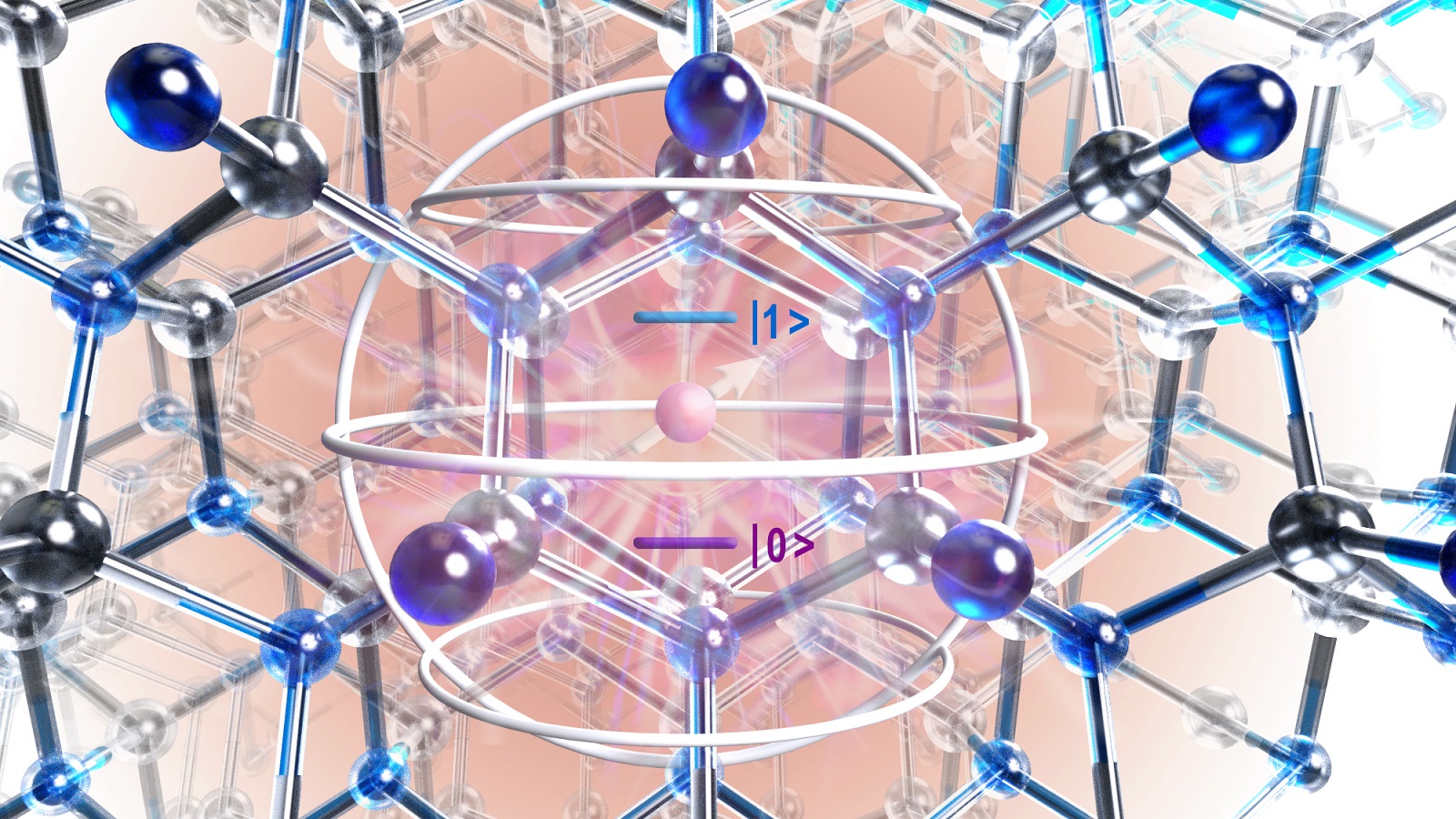Quantum computers have enormous potential for calculations using novel algorithms and involving amounts of data far beyond the capacity of today’s supercomputers. While such computers have been built, they are still in their infancy and have limited applicability for solving complex problems in materials science and chemistry. For example, they only permit the simulation of the properties of a few atoms for materials research.
Scientists at the U.S. Department of Energy’s (DOE) Argonne National Laboratory and the University of Chicago (UChicago) have developed a method paving the way to using quantum computers to simulate realistic molecules and complex materials, whose description requires hundreds of atoms.
“Ours is a powerful forward-looking strategy in computational materials science with the potential of predicting the properties of complex materials more accurately than the most advanced current methods can do at present.” — Marco Govoni, assistant scientist in the Materials Science division and Center for Molecular Engineering at Argonne
The research team is led by Giulia Galli, director of the Midwest Integrated Center for Computational Materials (MICCoM), a group leader in Argonne’s Materials Science division and a member of the Center for Molecular Engineering at Argonne. Galli is also the Liew Family Professor of Electronic Structure and Simulations in the Pritzker School of Molecular Engineering and a Professor of Chemistry at UChicago. She worked on this project with assistant scientist Marco Govoni and graduate student He Ma, both part of Argonne’s Materials Science division and UChicago.
“Our newly developed calculational method,” Galli said, “greatly improves on the accuracy attainable with existing quantum mechanical methods regarding calculations for specific defects in crystalline materials, and we have implemented it on a quantum computer.”
In the last three decades, quantum mechanical theoretical approaches have played an important role in predicting the properties of materials relevant to quantum information science and functional materials for energy applications, encompassing catalysts and energy storage systems. However, these approaches are computationally demanding, and it is still challenging to apply them to complex, heterogeneous materials.
“In our research we developed a quantum embedding theory that permitted the simulation of ‘spin defects’ in solids by coupling quantum and classical computing hardware,” Govoni said. These types of defects in solids have applicability to the development of materials for quantum information processing and nanoscale sensing applications far beyond current capabilities.
“Ours is a powerful forward-looking strategy in computational materials science with the potential of predicting the properties of complex materials more accurately than the most advanced current methods can do at present,” Govoni added.
The team first tested the quantum embedding method on a classical computer, applying it to the calculations of the properties of spin defects in diamond and silicon carbide. “Past researchers have extensively studied defects in both diamond and silicon carbide, so we had abundant experimental data to compare with our method’s predictions,” said Ma. The good agreement between theory and experiment gave the team confidence in their method’s reliability.
The team then moved on to test the same calculations on a quantum simulator and finally on the IBM Q5 Yorktown quantum computer. The results confirmed the high accuracy and effectiveness of their quantum embedding method, establishing a stepping stone to solving many different kinds of materials science problems on a quantum computer.
Galli noted that, “With the inevitable maturity of quantum computers, we expect our approach will be applicable to the simulation of regions of interest in molecules and materials for the understanding and discovery of catalysts and new drugs, as well as aqueous solutions containing complex dissolved species.”
Galli’s team is part of MICCoM, headquartered at Argonne; the Chicago Quantum Exchange, headquartered at UChicago; and the QISpin project funded by the Air Force Office of Scientific Research.
Their research leveraged the WEST software developed within MICCoM and made use of several computing resources besides the publicly available IBM quantum computer: the Argonne Leadership Computing Facility and the National Energy Research Scientific Computing Center, both DOE Office of Science User Facilities; and the University of Chicago Research Computing Center.
The team’s work is presented in an article entitled “Quantum Simulations of Materials on Near-term Quantum Computer” that appears in the July 2020 issue of npj Computational Materials. The research received support from the DOE Office of Science and the Air Force Office of Scientific Research.
The Argonne Leadership Computing Facility provides supercomputing capabilities to the scientific and engineering community to advance fundamental discovery and understanding in a broad range of disciplines. Supported by the U.S. Department of Energy’s (DOE’s) Office of Science, Advanced Scientific Computing Research (ASCR) program, the ALCF is one of two DOE Leadership Computing Facilities in the nation dedicated to open science.
Argonne National Laboratory seeks solutions to pressing national problems in science and technology. The nation’s first national laboratory, Argonne conducts leading-edge basic and applied scientific research in virtually every scientific discipline. Argonne researchers work closely with researchers from hundreds of companies, universities, and federal, state and municipal agencies to help them solve their specific problems, advance America’s scientific leadership and prepare the nation for a better future. With employees from more than 60 nations, Argonne is managed by UChicago Argonne, LLC for the U.S. Department of Energy’s Office of Science.
The U.S. Department of Energy’s Office of Science is the single largest supporter of basic research in the physical sciences in the United States and is working to address some of the most pressing challenges of our time. For more information, visit https://energy.gov/science.
Original post https://alertarticles.info
